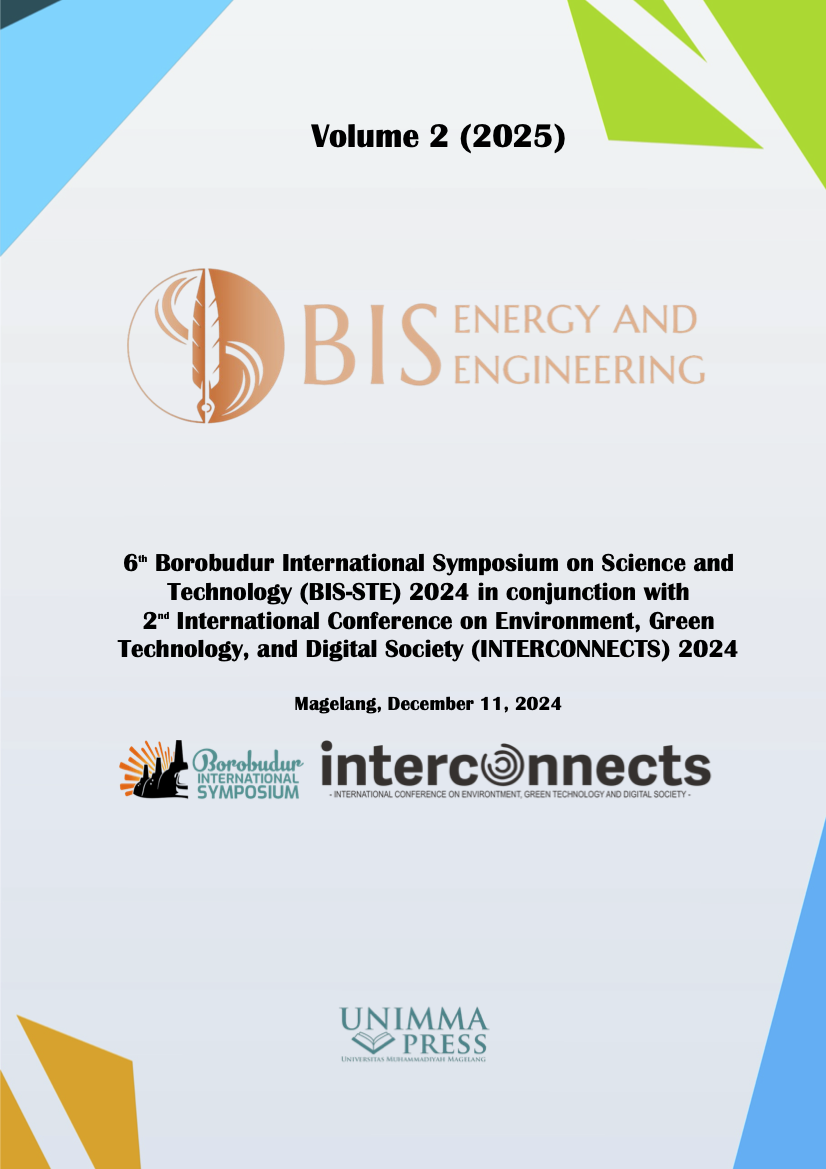Optimal sizing of distributed generation using a genetic algorithm approach for IEEE 33 bus system
Keywords:
Optimal sizing, Distributed generation, Genetic algorithm, IEEE-33 bus, Wind turbineAbstract
The electric power system consists of three main components, namely the generation, transmission, and distribution systems. The main problem that often occurs in distribution systems is voltage drops and power losses. So an effort is needed to overcome these two problems, one of which is by installing a small-scale generator or commonly called distributed generation (DG) in the electricity distribution system. To get optimal results, we need a method that can solve problems that are optimization in nature. In this final project Genetic Algorithm (GA) is a method used to solve a value search in the optimization problem of determining DG capacity. From the results of capacity optimization, the most optimal results are obtained in scenario 3 with the number of DG 3 and a power factor of 0.95, the optimal capacity results for DG are 1057.52 kW, 1203.01 kW, and 1159.37 kW respectively. To produce a total power loss value of 54.495 kW.
References
[1] D. B. Santoso, “Optimisasi Penempatan Dan Kapasitas Wind-Based Distributed Generation Untuk Minimisasi Losses Menggunakan Flower Pollination Algorithm”. Yogyakarta, Universitas Gadjah Mada, 2017.
[2] D. B. Santoso, "Penentuan Lokasi dan Kapasitas Wind-Based DG pada Sistem Distribusi 20 kV Menggunakan Flower Pollination Algorithm," JTERA (Jurnal Teknologi Rekayasa), vol. 5, no. 1, pp. 127-134, 2020.
[3] D. B. S. F. F. A. S. Sasongko Pramono Hadi Syahrial Shaddiq, "Optimal Capacity and Placement of Distributed Generation Using Metaheuristic Optimization Algorithm to Reduce Power Losses in Bantul Distribution System," International Conference on Information Technology and Electrical Engineering (ICITEE 2016), p. 315, 2016.
[4] Awansah, “Optimasi Kapasitas Dan Penempatan Distributed Generation Pada Sistem Distribusi (Studi Kasus Penyulang Nila Gi Metro)”. Bandar Lampung, Universitas Bandar Lampung, 2018.
[5] R. Fuaddi, “Penentuan Lokasi Dg Dan Kapasitor Bank Dengan Rekonfigurasi Jaringan Untuk Memperoleh Rugi Daya Minimal Pada Sistem Distribusi Radial Menggunakan Algoritma Genetika”. Surabaya, Institut Teknologi Sepuluh November, 2016.
[6] D. R. S. D. D. E. William Tanujaya, "Penerapan Algoritma Genetik Untuk Penyelesaian Masalah Vehicle Routing Di Pt.Mif," Widya Teknik, Vols. 10, No 1, Pp. 95-96, 2011.
[7] D. Setianto, “Minimisasi Rugi Daya Pada Jaringan Distribusi Radial 3 Fasa Menggunakan Genetika Algoritma Untuk mendapatkan Lokasi Kapasitor Dan DG Yang Optimal”. Surabaya, Institut Teknologi Sepuluh Nopember, 2015.
[8] D. B. Santoso, Sarjiya and S. P. Hadi, "Algoritma Aliran Daya dengan Metode Backward/Forward Sweep pada Sistem Distribusi Radial," CITEE, 2017.
[9] I. Zuhdy, “Penentuan Lokasi Dan Pembebanan Optimal Distributed Generation Menggunakan Metode Genetic Algorithm Pada Microgrid Tegangan Menengah”. Surabaya, Institut Teknologi Sepuluh Nopember, 2016.
[10] H. Manafi, N. Ghadimi, M. Ojaroudi, and P. Farhadi, "Optimal Placement of Distributed Generations in Radial Distribution Systems Using Various PSO and DE Algorithms," Elektronika IR Electrotechnika, Vols. 19, no. 10, no. 1392-1215, 2013.
[11] Y. A. Augusta and B. W. Pramono, "Optimasi Penempatan dan Kapasitas Multi DG pada Sistem Distribusi dengan Metode Flower Pollination Algorithm (FPA)," SINERGI, p. 8.
[12] F. Hia, Juningtyastuti and S. Handoko, "Optimasi Kapasitas DG pada Sistem Distribusi untuk Mengurangi Rugi Daya Menggunakan Ant Colony Optimization," TRANSIENT, vol. 4, p. 6, Juni 2015.
Downloads
Published
Conference Proceedings Volume
Section
License

This work is licensed under a Creative Commons Attribution-NonCommercial 4.0 International License.

